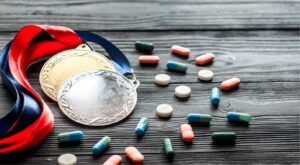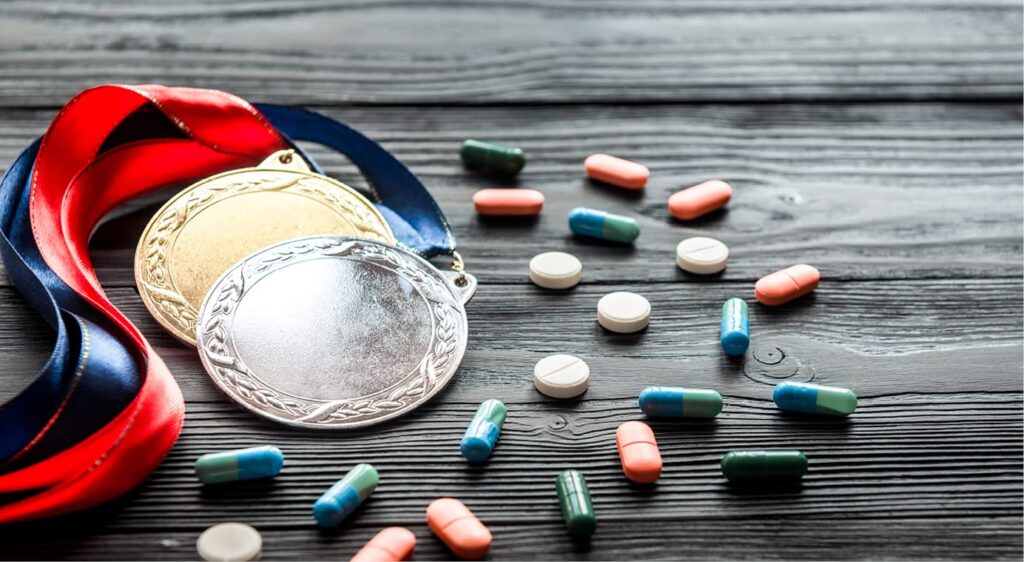
G Rajaraman
It is an overwhelming feeling but strangely it brings along sadness as well as some satisfied thoughts for Indian sport and its athletes. Such a mixture of emotions was sparked last week when, thanks to a question in the Rajya Sabha, it was revealed that as many as 123 of the 4260 samples collected in 2022 by the National Anti-Doping Agency (NADA) tested positive for banned substances.
The number of Adverse Analytical Findings (AAFs), as such positives are called, evoked both positive (pun unintended) emotions and negative as well. The reason is rather obvious. Sadness because many of India’s athletes brazenly continue to risk failing dope tests. Some sense of satisfaction because the anti-doping movement may have regained some lost ground.
On the one hand, India can heave a sigh that the percentage of AAFs has dropped to 2.88 in 2022 from a shocking 5.61 in 2019, the last time NADA could carry out tests without interruption due to Covid-19. That it is nearly half of the AAFs as compared to 2019. Impressive, one might be encouraged to conclude.
On the other hand, when you look at a closer look, you will recognise that the total of 123 AAFs in 2022 is the second highest in 10 years. And even in percentage terms, the 2.88 per cent positives out of the 4260 samples is the second highest. Clearly, India cannot afford to take its foot off pedal in its drive to reduced instances of doping.
|
AAFs in Tests conducted by NADA India |
|||||
| Year | Tests | AAF | % AAF | ||
| 2013 | 4274 | 93 | 2.17 | ||
| 2014 | 4340 | 99 | 2.28 | ||
| 2015 | 5162 | 110 | 2.13 | ||
| 2016 | 2831 | 73 | 2.57 | ||
| 2017 | 3174 | 71 | 2.23 | ||
| 2018 | 3979 | 104 | 2.61 | ||
| 2019 | 4004 | 225 | 5.61 | ||
| 2020 | 1250 | 55 | 4.40 | ||
| 2021 | 1984 | 46 | 2.31 | ||
| 2022 | 4260 | 123 | 2.88 | ||
|
Sources: 2013-2019 – WADA Annual ADRV Reports and 2020-2022 – MYAS reply to Rajya Sabha question |
|||||
Since World Anti-Doping Agency’s (WADAO) Testing Figures Report 2021 has just been released and the latest WADA Anti-Doping Rule Violation Report is for 2019, the figures for 2022 are clearly from NADA’s records. These will not include tests conducted by other Anti-Doping Organisations (ADO) representing International Federations and international event organisers.
In the past year itself, the likes of Olympian discus thrower Kamalpreet Kaur, Olympian gymnast Dipa Karmakar as well sprinter Dhanalakshmi Sekar have all tested positive when their samples were collected by international agencies. Clearly, some of these ADOs have been gathering intelligence and targeted some Indian athletes.
On its part, NADA was seen doing many things right in 2022 in the war against doping, including securing exemplary punishment for coach Mickey Menezes and successfully appealing against the three-month ineligibility imposed on MR Poovamma and getting it increased to two years. NADA has not been slack, while seeming to sharpen its focus on creating greater anti-doping awareness.
Of course, NADA has imposed provisional suspensions on athletes like B Aishwarya, Sanjita Chanu and Dutee Chand after their samples tested positive in 2022. That some positives have emerged in on out-of-competition tests suggests that deeper thought is being applied to the testing strategy unlike in the past when the timing of the out-of-competition tests was awry.
It is not as if out-of-competition tests were out of fashion in the pre-Covid years. In fact, more than 50 per cent of all testing from 2017 to 2019 were out of competition. There was a feeling among the anti-doping community, however, that these were not administered at the right time for them to be effective.
The road ahead gets more challenging for NADA.
NADA’s intelligence and investigation capabilities are areas that can do with some strengthening. It needs to activate these mechanisms to instill a sense of fear among those who perpetrate doping among athletes, unmindful of the harmful side-effects on the bodies and minds of the young athletes.
With a growing number of athletes ignoring warnings that supplements can be contaminated and testing positive, that task of certifying supplements as safe can be distracting. Come to think of it, that should not be the responsibility of NADA. It must be left to Ministry of Youth Affairs and Sports’ field arm, the Sports Authority of India, as well as the Indian Olympic Association.
There is also a need for anti-doping research and a starting point could be the athletes who accept an agreed sanction, drawing the benefit to get the ineligibility period reduced by a fourth of the time. If they have admitted an anti-doping rule violation, some of them should be able to throw more light on the scourge and help the war against doping. Unfortunately, that has not happened.
For all that, sport has been a vehicle for many to escape the tentacles of poverty. Successive Ministers have responded in the negative to questions in Parliament if there is a doping scandal in Indian sport. And yet, there is an unsubstantiated claim with overseas origins that an organised doping network entices ‘poor and vulnerable’ coaches and athletes in India to try shortcuts.
Sadly, the nation’s sports fans do not concern themselves much with the scourge. An overwhelming majority does not rise above the narrow conversation on victory and defeat. It is only when until a leading athlete tests positive and attracts a sanction that there is momentary outpouring of emotion. Just as in mainstream media. And social media.
Until there is collective call for clean sport, cheating in sport, especially doping, will remain as certain as death and taxes. That is a tall order since it needs a buy in from everyone in the country’s sports ecosystem. It is only then that India can win its race to drop down the list of top doping offenders.




